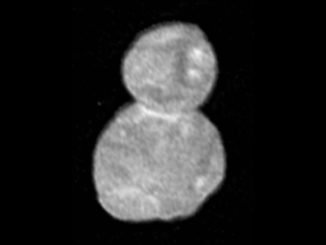Live coverage of the ExoMars Trace Gas Orbiter and the Schiaparelli lander arriving at Mars. Text updates will appear automatically below; there is no need to reload the page. Follow us on Twitter.
Related Articles

News
Live coverage: New Horizons returns first close-up image
NASA’s New Horizons spacecraft made a historic New Year’s encounter with an object nicknamed Ultima Thule in the Kuiper Belt a billion miles beyond Pluto. The probe passed around 3,500 kilometres from the mysterious object at 0533 GMT on New Year’s Day, making it the most distant Solar System body ever explored up close.

Observing
See the Moon meet Mars and Saturn
In the bright evening twilight of 14, 15 and 16 July, observers in the British Isles and Western Europe can see the waxing gibbous Moon pass by Mars, first-magnitude star Antares in Scorpius, then Saturn. This series of conjunctions occurs very low in the southern sky for UK-based astronomers, while Australasian observers are ideally placed to view the spectacle almost overhead.

